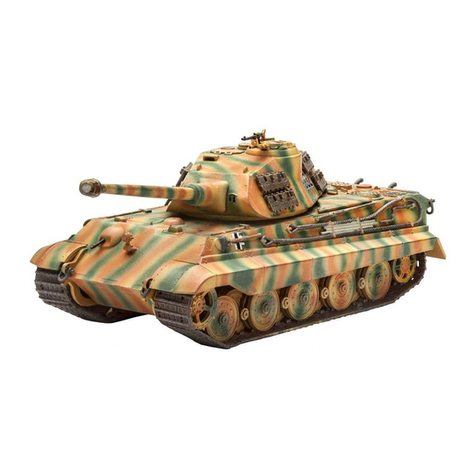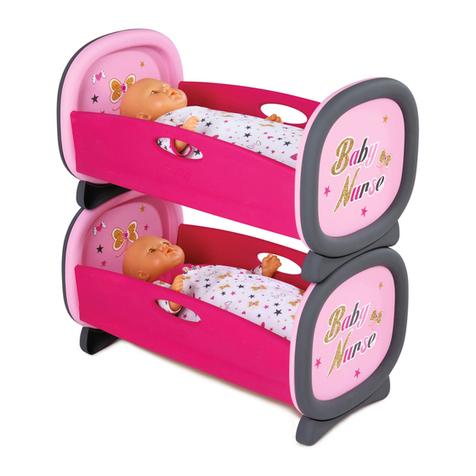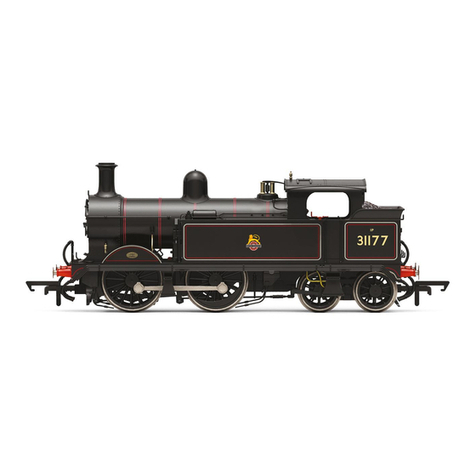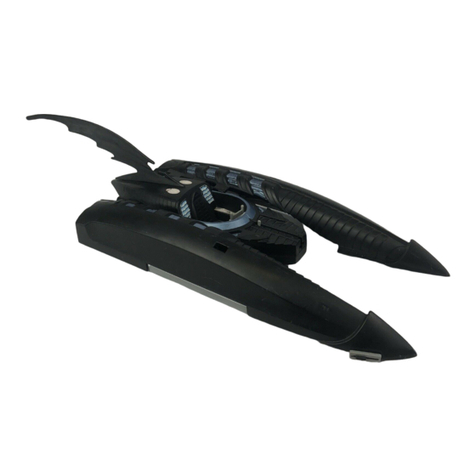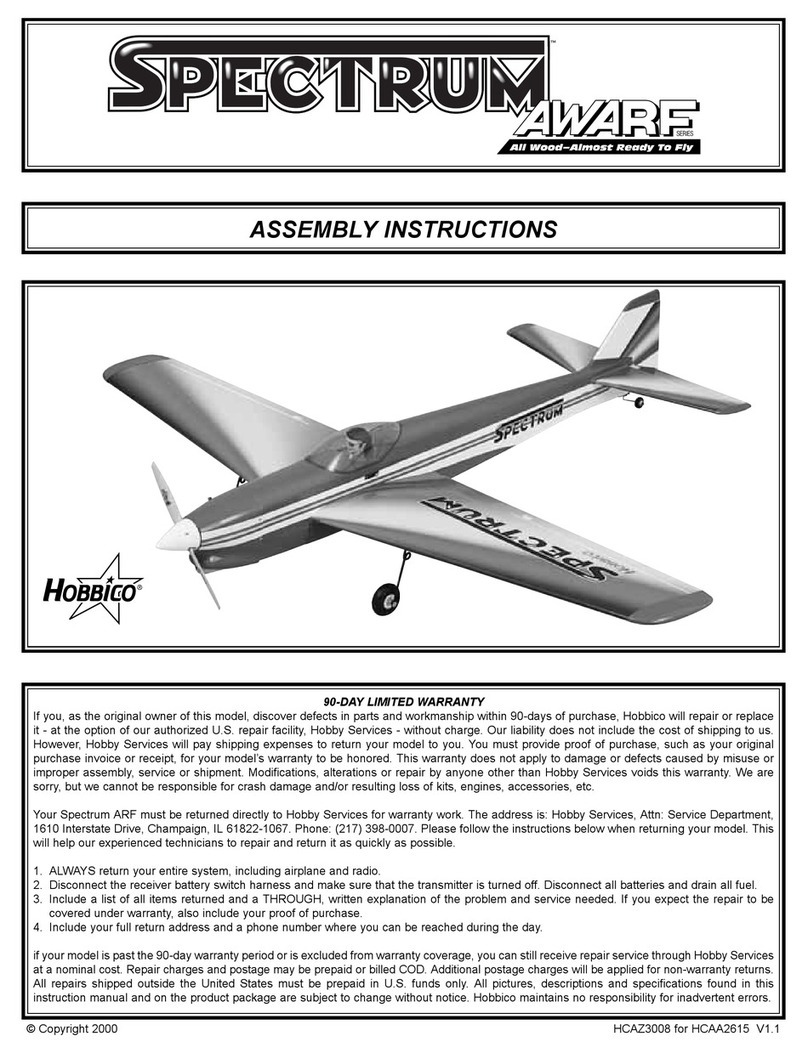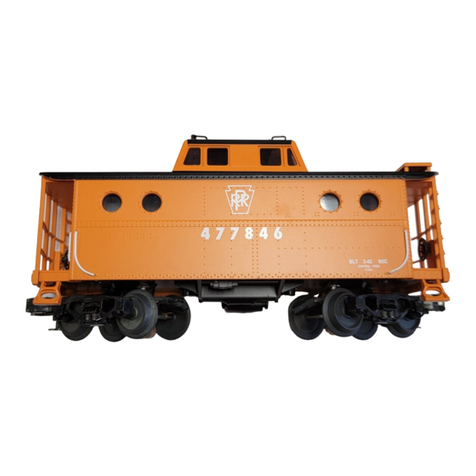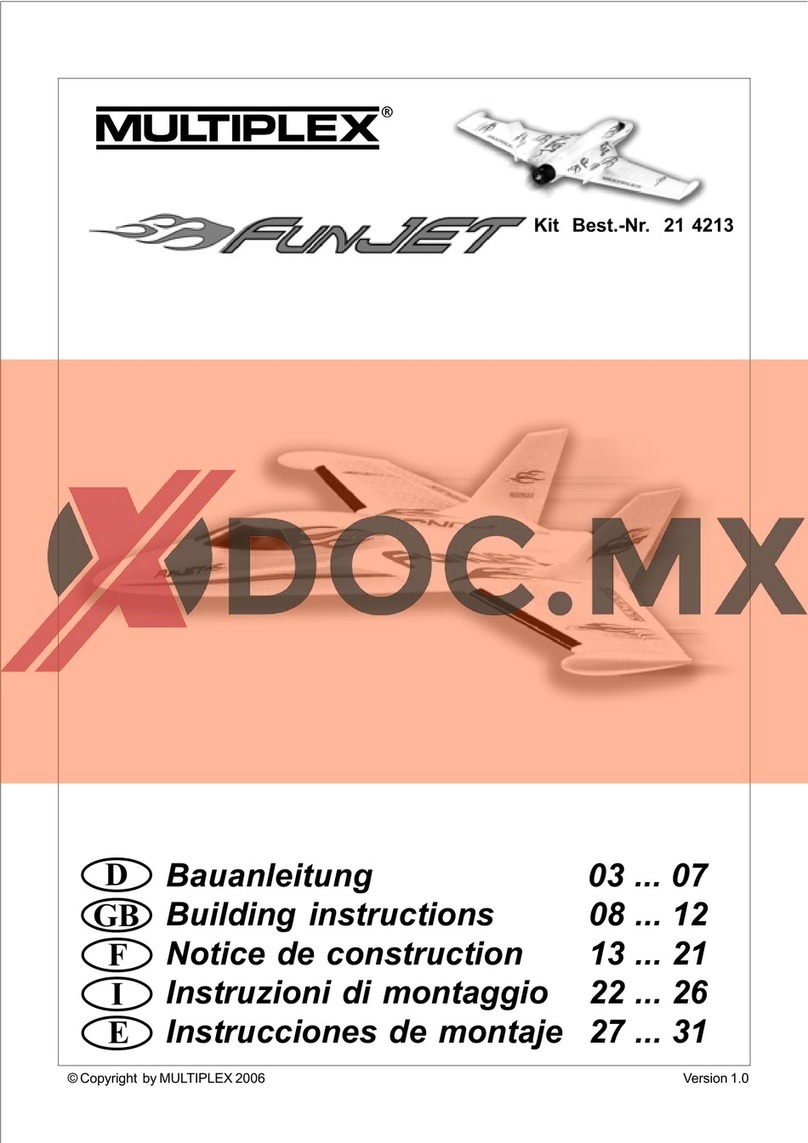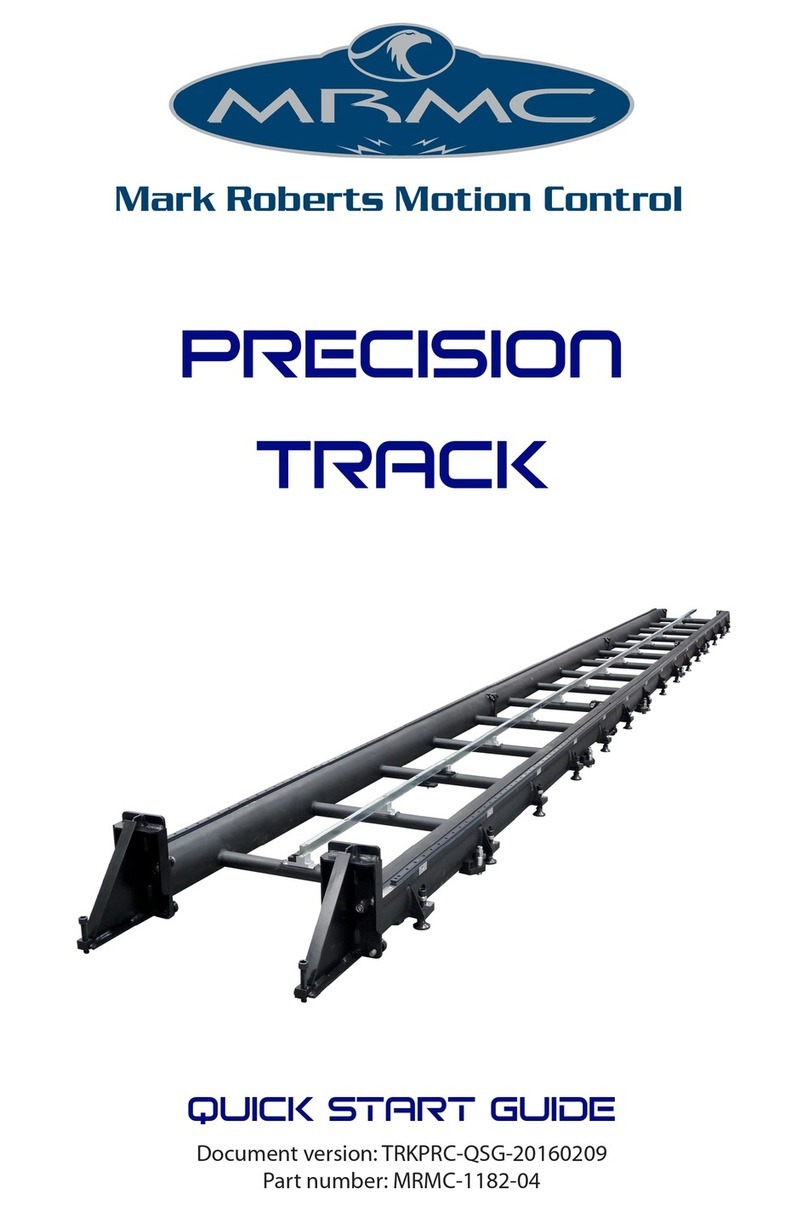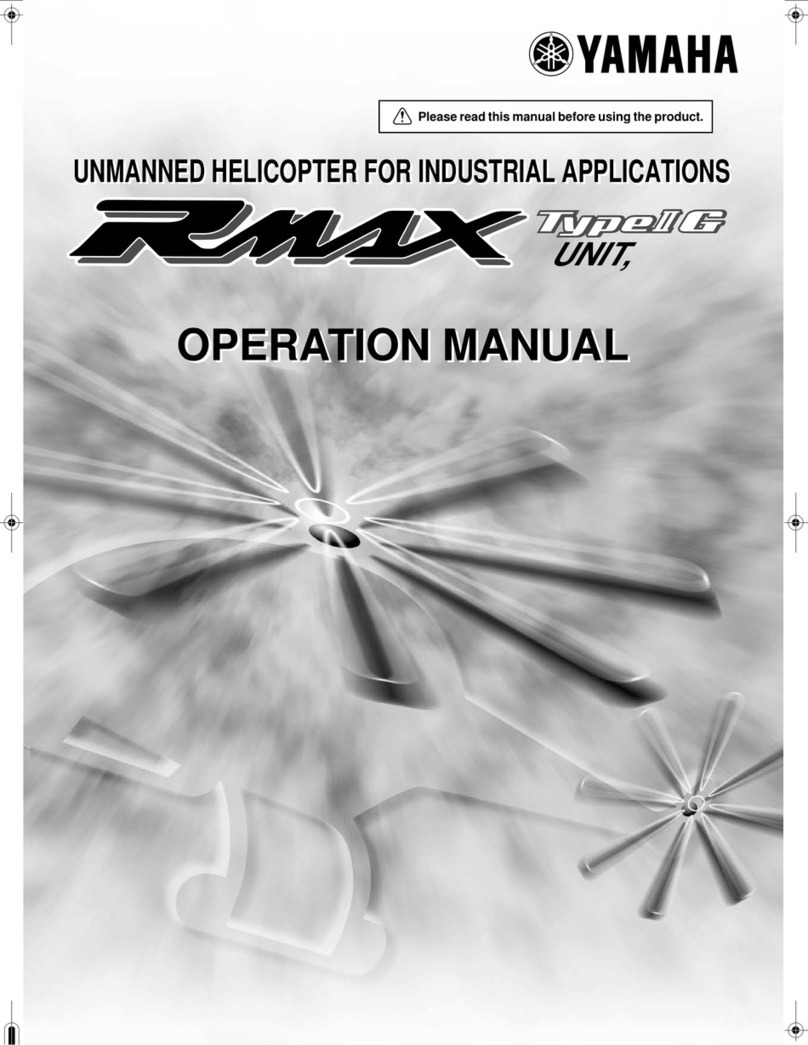Maplin N74DG User manual

CHILDREN'S ELECTRIC RIDE-ON
With remote control function
Owner's Manual
with Assembly Instructions
Styles and colours may vary.
Made in China.
The owner's manual contains important safety information as well as assembly, use and
maintenance instructions.
The Ride-On car must be assembled by an adult who has read and understands the
instructions in this manual.
Keep the package away from children and dispose of properly before use.
Keep this manual for future reference.

About Your New Ride-On 1
Details on the purchase of your new
Ride-On car.
This Ride-On car will provide your child with many hours of riding of enjoyment.
To help assure you and your child a safe experience, we ask you to please read
this manual carefully, and keep it for future reference.
Please do follow the recommendations in this manual, they are designed to
improve the safety and operation of your Ride-On car and your child.
Battery
Fuse
Charger
Suitable age:
LoadCapacity:
Speed:
Sizeofcar:
Powerway:
Charge time:
6V7Ah*1
7A
6V1000mA
37~96 Months
Under30 kgs
1WD 3km/h
115 x 63 x 53 CM
Charging type
8 ~ 12 hours
2WD
6V7Ah*2
5A&13A
12V1000mA
3~5km/h
VER: SMS-JE158-RC-EN-131213
VER: SMS-JE158-EN-131213

Parts List 2
PART
NO.
1
2
3
4
5
6
7
8
9
10
11
12
13
14
PART NAME
Gearbox
Driving wheel
•12 washer
•10 locknut
Bushing
Normalwheel
Motorhood
Vehicle body
Rear axle
Steering column
Headlight
View mirror
Frontaxle
Seat
1WD
Q'ty (pcs)
2WD
One pair
REMARKS
15
16
17
18
19
20
21
M5x12 machine screw
Steering wheel
M5x35 machine screw
•5nut
Side support
Charger
Remote controller
Placed on the vehicle body
Placed on the steering wheel
Placed on the steering wheel
One pair, and marked "L" or "R"
A
B
C
D
E
F
G
H
i
J
•4x12faltheadscrew
Hubcap
Spanner
Split pin
•10 washer
M5x20 machine screw
•4x12roundheadscrew
•5nut
M5x20 machine screw
R/C driver
Assembly package
For front axle and motor hood.
1 pcs for spare
1 pcs for spare
For view mirrors
For side supports
2Forforviewmirror,1pcsplacedontheR/Cdriver
pcsviewmirror
Placed on theR/C driver

Parts Diagram 3
NOTE: Some parts shown are assembled on both sides of vehicle
20
C
21
15
14
F
8
7
A
16
17
18
12
9
11
2
1
B
4
3
B
4
3
19
6
G
5
G
13
3
H
10
D
J
A
i
E

Attach the Side Support 4
WARNING!
FORTHESAFETYOFYOURCHILD,PLEASEREADALLWARNINGSAND
ASSEMBLY/USEINSTRUCTIONS.KEEPTHISGUIDEFORFUTUREREFERENCE.
•ADULT ASSEMBLY REQUIRED. The product contains small parts, which are for
adult assembly only. Keep children away when assembling.
•Always remove protective material and poly bags and dispose before assembly.
•Make sure that the power switch is turned "OFF" before assembling the Ride-
On.
•Before first use, it is recommended to charge the battery for at
least 4 to 6 hours.
•Assembly tools required:
Screwdriver Long nose pliers Spanner
(not included) (not included)
2
1
•4x12 round screws, part G
x5
Turn the vehicle body upside down.
1. Fit the side support to the vehicle
body, If the side support does not
seem to fit, please try the other
one and try again! As they are
different but hard to tell apart!
2. Tighten five Ø4x12 round screws,
part G to secure it.
3. Repeat for the other side.

Attach the Rear Axle 5
•4x12 flat screws, part A
1
2 x4 1. Fit the front axle to the vehicle body.
2. Tighten four Ø4x12 screws flat
head screwis, part A to secure it.
3. Repeat for the other side.
3
5
Remove all the parts from the rear axle.
4. Insert the rear axle into the hole in the vehicle body. 4
5. Make the square part on the rear axle match with the square opening in
the vehicle body.

1WD Attach the Rear Wheels 6
Rear axle
4
5
3
2
1
Tools required: Spanner
1. Slide the gearbox onto the rear axle (Left Side).
2. Slide the driving wheel onto the rear axle. And make the driving wheel line up with
the gearbox.
3. Slide the Ø12 Washer onto the rear axle.
4. Tighten a Ø10 Locknut to the end of the rear axle with a
spanner.
5. Fit the hubcap to the wheel cover.
9
610
7
8
6. Slide the Ø12 Washer onto the rear axle (Right Side).
7. Slide the Bushing(right end first) onto the rear axle .
8. Slide the Normal wheel onto the rear axle. And keep it lined up with the
Bushing.
9. Slide the Ø12 Washer onto the rear axle.
10. Tighten Ø10 Locknut to the end of the rear axle with a spanner.
11. Fit the hubcap to the wheel cover.
11

2WD Attach the Rear Wheels 7
Rear axle
4
5
3
2
L
1
1. Slide the gearbox onto the rear axle (Left Side)."R" labelled gear box should be fit to the
"R" side of vehicle body; "L" labeled gear box should be fit to "L" side of vehicle body.
2. Slide the driving wheel onto the rear axle. And keep the driving wheel lined up with the
gearbox.
3. Slide the Ø12 Washer onto the rear axle.
4. Tighten a Ø10 Locknut to the end of the rear axle with a spanner.
5. Fit the hubcap to the wheel cover.
Tools required: Spanner
6
R
7
8
9
6. Slide the gearbox onto the rear axle (Right Side).
"R" labelled gear box should be fitted to the "R" side of vehicle body; "L" labelled
10 gearbox should be fit to "L" side of vehicle body.
7. Slide the driving wheel onto the rear axle. And keep the driving wheel lined up with
the gearbox.
8. Slide the Ø12 Washer onto the rear axle.
9. Tighten a Ø10 Locknut to the end of the rear axle with a
spanner.
10. Fit the hubcap to the wheel cover.

Attach the Front (Normal) Wheels 8
Front axle
1
2
4
5
3
6
Tools required: Spanner
1. Slide a Ø12 washer onto the front axle.
2. Slide the bushing (ring end first) onto the front axle.
3. Slide the normal wheel (with wheel hubcap) onto the rear axle. and keep the
normal wheel lined up with theBushing.
4. Slide a Ø12 washer onto the front axle.
5. Tighten a Ø10 Locknut to the end of the front axle with spanner.
6."Snap" the hubcap to the wheel cover.
Repeat this step for the other side.
GAP
After assembling any wheel to the axles, please check the gap
between the screw thread and the collapsible (refer to below
picture), if the gap is too big, please add two or three washers inside
the wheel, But after tightening the nut outside the wheel, please turn
the wheel by hand, to check if the wheel can run smoothly, this is very
important, because if the wheel can run smoothly, it is ok, but
if the nut presses the wheel and the wheel can't turn smoothly,
the motor could be damaged. Then you need to remove one or
two washers to make sure the wheel can run smoothly.

Attach the Steering Column 9
6
5
5
4
Hole in the
front axle linkage
3
4
2
1
2
3
1
Steering Gear Box 3
1
Turn the vehicle body on its side.
1. Attach the R/C driver to the
steering gearbox, then make it
match with steering 1. Slide a Ø10
washer onto the steering column
and the straight end or the
gearbox.
2. Insert the straight end of steering
column up through the hole at the
front.
3. Insert the straight bottom side,

and column up through the hole.
Insert the R/C diver through the
vehicle body from end of steering
and out through the the hole in the
steering gearbox from the bottom
side, and out through the hole.
4. Insert the bent end of steering
column through the hole in the
front axle in the dash linkage.
5. Line up the holes in the R/C
driver and the hole in the steering
column, then tighten.
6. Fit M5x20 machine screws onto
the and Ø5 nut back, in the same
location with a screwdriver and a
Ø10 washer on the steering
column.
7. Insert the bent end of the
steering column, bend the ends of
split pin. Insert a split pin into the
hole in the column through the hole
in the front axle linkage. Then bend
the split pin back using a long nose
pliers.
8. Fit a Ø10 washer to the steering
column.
9. Insert a split pin into the hole in
the steering column, bend the ends
of split pin back using a long nose
pliers.

Attach the & Steering Wheel 10
Turn the vehicle body upright.
1. Fit the headlight to the vehicle
body, and push until you hear it
click.
2. Repeat for the other headlight.
1
2
Remove the M5x35 machine screw and
•5 nut from the steering wheel.
3. Place the steering wheel over the
steering column, protruding from the
middle of the steering wheel base.
4. Align the holes on each side of
steering wheel with the holes at the
4
3
5
End of the
steering column
end of the steering column.
5. Fasten a nut on the opposite end of the
screw to secure the steering wheel to
the steering column.

Connect the Power Supply 11
•4x12 flat screws, part A
2
x4
1
Battery
1WD
1. Fit the motor hood on the motor.
2. Tighten four Ø4x12 flat head screws, part A to secure it.
2WD
1. Fit the motor hood on the motor.
2. Tighten four Ø4x12 flat head screws, part A to secure it.
Repeat the above step for the other Motor hood.

Attach the Motor Hood 12
1
Vehicle
connector
Fuse box 2
Battery
Motor connector
Red fuse connector
1WD
1. Plug the Vehicle Connector into the Motor Connector on
body as shown above.
2. Plug the Red fuse connector into the terminal on battery.
2WD
1. Plug the Vehicle Connector into the Motor Connector on
body as shown above. Repeat for the other side.
2. Plug the Red fuse connector into the terminal on battery.

Attach the Seat 13
1. Insert the rear view mirror into the slots of the
rear view mirror bracket located on the door.
2. Insert a M5x20 machine screw through the top
of the hole in the rear view mirror and rear
mirror bracket (a nut inside the rear mirror
bracket). Fasten the screw bolt with a
screwdriver.
2
3. Fasten a nut on the bottom side of the screw to
secure the view mirror to the vehicle body.
4. Repeat the above steps for the remaining rear
view mirror.
1
3
4

Attach the Rear View Mirrors 14
2
2
11
2
2
Remove the M5X12 machine screws *2 from the vehicle body.
1. Fit the tabs at back of the seat to the holes in the vehicle body.
2. Tighten two M5x12 machine screws with a screwdriver.

Safety 15
WARNING!
PREVENTINJURIESANDDEATHS:
•NEVERLEAVECHILDUNATTENDED.DIRECTADULTSUPERVISIONISREQUIRED.
Always keep child in view when child is in vehicle.
•This toy should be used with caution since skill is required to avoid falls or
collisions causing injury to the user or third parties.
•Protective equipment should be worn.
•Never use in roadways, near cars, on or near steep inclines or steps,
swimming pools or other bodies of water.
•Always wear shoes.
•Always sit on the seat.
•Not to be used in traffic.
•This toy is unsuitable for children under 37 months due to its maximum
speed; Maximum user weight is 30 kgs.
•This toy has no brake.
Must confirm before using that following work which is already finished:
•Important! Before using the vehicle for the first time, the battery needs to be charged for 4 to
6 hours, no more than 10 hours. Only an adult should charge and recharge the battery.
•Check all the screws, cap nuts and protective coverings regularly and tighten as required.
Rules for Safe Riding
•Keep Children within Safe Riding Areas:
- Never use in roadway, near motor vehicles, on lawn space, on or near steep inclines or steps,
swimming pools or other bodies of water;
•Use the toy only on flat surfaces. Such as inside your house, garden or playground.
•Never use in the dark. A child could encounter unexpected obstacles and have an accident.
Operate the vehicle only in the daytime or a well-lit area.
•It is prohibited to change the circuit or add other electric parts
•Inspect wires and connections of the vehicle periodically.
•Do not let any child touch the wheels or be near them when the car is moving .
•This vehicle has adjustable play seat belts. Please instruct children how to tie the safety belt
before using, guarantee the security.
Use the vehicle on generally level ground ONLY! DO NOT Use the vehicle on Lawn space!

Use Your Ride-on 16
3
IMPORTANT! 2
6
9
Always stop vehicle
when changing the
speed or direction to
avoid damage the
gears and motor.
4
5
1
78
1. Power Switch: Turns the vehicle on and off.
2. Shift Lever: Changes the direction the vehicle moves from forward to reverse.
●To move the car forward, shift the lever up
●To move the car backward, shift the lever down.
●Shift the lever in the middle, the stop.
3. Sounds buttons: Press for sounds playing.
4. Volume knob (OPTIONAL):Turn the knob clockwise to increase the volume; Turn the
knob counterclockwise to decrease the volume.
5. Foot pedal: Applies power (speed) to the vehicle.
●To move the car, press the pedal down.
●To brake or slow down, release pressure from the pedal.
6. Digital voltmeter (OPTIONAL):See <Charging>, page 19
18.
7. Foot - R/C switch (OPTIONAL): Change the operating mode, foot-operate or R/C-operate.
8. High/Low speed switch (OPTIONAL): The switch operates the vehicle to move in low or
high speed.
9. 3.5 mm Audio input connector (OPTIONAL)
ADVANCED USE - High speed Drive
Make sure your child knows how to steer, how to start and stop the vehicle and knows the rules for safe
driving. The vehicle can be driven at a maximum of 3~5 km/h.

Use the Remote Controller 17
ADULT OPERATING REQUIRED
LEFT JOY STICK
INDICATORLIGHT
RIGHT JOY STICK
ON-OFF SWITCH
ASSEMBLY
1. Insert the antenna into the controller by tweak the antenna clock-
wisely;
2. Lift the battery compartment door on the back of the controller and
insert two AA(LR6) batteries.
NOTE: This product does not include the AA(LR6) batteries.
OPERATION
1. Press the FOOT - R/C SWITCH on the vehicle to the "Remote control"
position.
2. Press the ON-OFF SWITCH on the remote controller to the "ON" position,
the indicator light will be lighting.
3. Push the LEFT JOY STICK to the front, the vehicle goes forward, pull the
LEFT JOY STICK to the back, the vehicle goes backward.
4. Push the RIGHT JOY STICK to the left, the vehicle turn left, push the
RIGHT JOY STICK to the right, the vehicle turns right.
BATTERYINFORMATION
●DO NOT mix old and new batteries.
●DO NOT mix alkaline, standard (carbon-zinc) or rechargeable batteries.
●DO NOT charge non-rechargeable batteries. Always have adult
supervision when charging rechargeable batteries.

Charging 17
18
ONLY AN ADULT CAN CHARGE AND RECHARGE THE BATTERY!
WARNING!
•PREVENTFIREANDELECTRICSHOCK:
- Use the only rechargeable battery and charger supplied with your vehicle. NEVER substitute the battery
or the charger with another brand. Using another battery or charger my cause a fire or explosion.
- Do not use the battery or charger for any other product. Overheating, fire or explosion could occur.
- NEVER modify the electric circuit system. Tampering with the electric system may cause a shock, fire or
explosion or my permanently damage the system.
- Do not allow direct contact between battery terminals. Fire or explosion can occur.
- Do not allow any type of liquid on the battery or its components.
- Explosive gasses are created during charging. Do not charge near heat or flammable materials. Charge
the battery in a well-ventilated area ONLY.
- NEVER pick up the battery by the wires or charger. Damage can occur to the battery and may cause a
fire. Pick up the battery by the case ONLY.
- Charge the battery in a dry area ONLY.
•Battery posts, terminals and related accessories contain lead and lead compounds, chemicals
known to the State of California to cause cancer and reproductive harm. Wash hands after
handling.
•Do not open the battery. Battery contains lead acid and other materials that are toxic and
corrosive.
•Do not open the charger. Exposed wiring and circuitry inside case may cause electric shock.•
Only adults may handle or charge the battery. NEVER allow child to handle or charge the
battery. Battery is heavy and contains lead acid (electrolyte).
•Do not drop the battery. Permanent damage to the battery could occur or cause serious injury.
•Before charging the battery, check for wear or damage to the battery, charger, its supply cord
and the connectors. DO NOT charge the battery if any damage to parts has occurred.
•Do not allow the battery to drain completely. Recharge the battery after each use or once a
month if not used regularly.
•Do not charge battery upside down.
•Always secure the battery with the bracket. Battery can fall out and injure a child if vehicle tips
over.
•The charging input socket is at the right side of the seat.
•The POWER SWITCH must be turned in OFF position when charging.
•Before the first use, you should charge the battery for 4-6 hours. Do not recharge
the battery for more than 10 hours to avoid overheating the charger.
•When the vehicle begins to run slowly, recharge the battery.
•After each use or once a month minimum recharge time as 8 to 12 hours, less than
20 hours at most.
Table of contents

